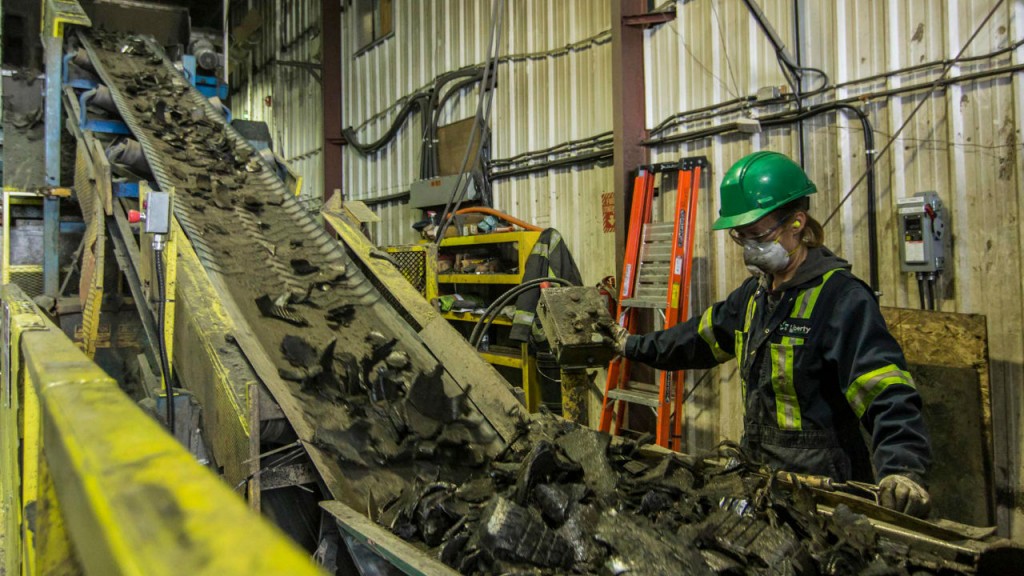Large tires find second lives through recycling efforts
Kal Tire is removing tires from the scrap pile through a new program to shred and reuse massive Off-the-road tires

Tires are the foundation of transportation in North America - quite literally. Estimates from 2015 suggest that in the United States and Canada there are around 300 million passenger vehicles on the roads. Some simple math suggests that this number means there are some 1.2 billion tires in contact with road surfaces at any particular time.
Those tires need somewhere to go at the end of their lives, and there have been great advances in recent years to develop recycling programs for passenger tires that previously may have been simply dumped into a landfill or scrap heap to take up space. Improvements in recycling processes mean that many tires are shredded and reused in any number of products and processes after their useful life is over.
However, passenger tires aren't the only rubber meeting the road - or, in some cases, the rock and dirt.
Heavy off-road vehicles such as mining trucks and earthmoving equipment also run on rubber. These tires, being rather larger than their passenger-vehicle cousins, pose an even greater problem when it comes to end-of-life treatment. Most of the time, the scrap yard has been their final destination, leading to potential environmental challenges.
Finding a better approach to end-of-life OTR tires
When its customers expressed their desire to seek better approaches to disposing of their old off-the-road (OTR) tires, Kal Tire started looking at its options for recycling.
"Kal Tire, as an on-site service provider, has always felt an obligation to help customers with tire-related issues - not only the initial acquisition and ongoing maintenance, but long-term," said Bob Bennett, Kal Tire's vice president of Canadian operations, Mining Tire Group. "We have seen that disposal is an issue that has been a problem for customers wherever we do business."
In many cases, owners of OTR tires have had to get creative with their disposal options, depending on local regulations.
"Some jurisdictions have allowed tires to be buried... a disposal option that isn't necessarily consistent with modern environmental stewardship, but it was permitted in large part because there was no good alternative," Bennett explained. "In some cases, you could send them to a vendor who would cut them in half and put them into the cattle industry for use as water or feed troughs."
In other cases, OTR tires are used to build berms or other structures around work sites - which continues to leave old tires sitting around in the environment.
Pyrolysis is becoming a more popular approach for tire disposal, but the size and manufacture of OTR tires lead to challenges in the amount of material that remains at the end of that process.
Shredding is often considered the best way of handling old tires.
"Shredding has a variety of applications and is widely used in the passenger and medium truck business," said Bennett. "The result is a nice product that can be used in a variety of applications - it can be used for running tracks, can be compressed into mats for high-wear areas or cushioning. It can be used in highway construction, and in newer applications such as sub-base in engineered landfills or in road construction as an alternative to gravel or aggregates."
Connecting with Liberty Tire
When shredding is considered, the sheer size of OTR tires is a problem: a 63-inch mining tire is not as easy to process and shred as a car tire. So, Kal Tire sought out experience in the tire recycling industry.
Kal Tire connected with Liberty Tire, one of North America's leading tire recyclers, which operates a facility in Legal, Alberta. Neil Bansal, regional vice president for Liberty Tire, said the facility has previously handled around 40,000 tons a year of passenger and light truck tires.
"When Kal Tire approached Liberty Tire, our existing equipment was not capable of shredding these giant mining tires," he said. "We partnered with Kal Tire and designed a system that is capable of doing so; that upgrade was done in 2016."
Through its close relationship with its heavy industry tire customers, Kal Tire has been setting the stage for this recycling program over the past few years.
"We've been talking with customers for around three years; some of the equipment involved had a long lead time," Bennett said. "What we're doing now is engaging with our customers. We have a couple of customers who have sent product already, and a contract with another who will start sending product over. We also have several who are looking seriously at the alternative."
The OTR tire recycling program is managed from customer sites by Kal Tire reps, Bennett explained.
"We manage the collection, the weighing and the documentation of the tire. They're removed from the site and delivered to Liberty's facility north of Edmonton," he said. "There, they're again received, weighed and catalogued - we have documentation control for the life cycle of that tire."
From there, the tires - which can run in sizes up to 63 inches - are prepared for the shredding process. The sheer size of the OTR tires means a lot of initial work before going into the machines, though.
"These tires are so huge that you can't put them in the shredder as is. In addition, they have a large bead that needs to be removed," Bansal described.
When the tires move into the recycling line, mechanical shears are used to chop them into around a dozen or so pieces. The bead is cut off, to prevent problems in the machinery, Bennett said.
"The bead on a 63-inch tire is around four to six inches - that would just gum up the teeth. So, they extract the bead and dispose of it as a separate entity," he said. "It's rubber-impregnated steel, but it's high quality steel - there's value there."
Once the tires are cut down to size, the shredding process begins. Liberty Tire uses a Granutech-Saturn shredder for processing of the large tires, and thanks to the company's extensive experience with smaller tire sizes, is able to manage the various challenges of rubber shredding.
"Rubber has elastic properties, much different than rock, but Liberty has learned over the years just how to run the equipment effectively," Bennett said. "It's not unlike a standard crushing circuit making aggregates in a quarry - it's a closed-circuit process, where whatever fraction you're looking for drops through a screen deck and out into a stockpile, while the oversized keeps circulating until they reach the optimum or design-size fragment."
Bansal said the process is carefully regulated to ensure that the system operates to the best efficiency possible while processing around 14 tons of rubber an hour.
"You can shred more tires, but the size we want at the end of the line has a big effect on how much the shredder can process," he said. "If you're just making large chips, that's a different story - you can run up to 20 tons an hour. But, when you're targeting a standard size chip, it takes a little more time."
The end result of Liberty's OTR tire shredding operation is a collection of products that can be used in a number of different ways. One of the main areas they are targeting is tire-derived aggregate (TDA), Bansal said. TDA has seen interest within Alberta and elsewhere for use in engineering projects such as landfill construction, where it can replace aggregate in the leachate layers. It can be used as part of the subgrade for roads and in some other areas which would normally involve traditional aggregates as well. Other markets for the end product include tire-derived- fuel (TDF), mulch, crumb rubber and similar products.
Bennett said he expects to have around 12,000 to 15,000 tons of tires processed per year, with the goal of reducing existing stockpiles of waste tires spread around at Canadian mines. Offering the option of recycling to Kal Tire customers is a way to close the circle of tire life cycles, he said.
"We help source tires, we help spec tires, we manage the tires throughout their life cycle on the mine site, but there was a gap when it came to end-of-life tires," he described. "Our tracking software will be able to give customers the comfort of knowing the full life cycle of the tire, right through to disposal - where before it just stopped at scrap in a stockpile."
Bennett adds that there are some minor costs involved in the shipping and final handling of the tires, but that the disposal program isn't really intended to be a money maker for Kal Tire. "It's not a huge profit opportunity for us - it just fits nicely into our relationship with the customer. We're helping solve a problem to which there's no ready solution."



